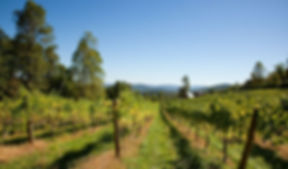Virginia Wines - A Hidden Gem in the American Wine Landscape
- Ben Renshaw
- May 31, 2023
- 2 min read

Virginia wines have steadily gained recognition in recent years, with the state now boasting over 300 wineries and 4,000 acres of vineyards. Situated at the crossroads of American history and rich in agricultural tradition, Virginia’s wine industry has grown dramatically since Thomas Jefferson’s failed attempts to cultivate grapes at Monticello in the late 1700s. Today, Virginia offers a diverse range of wines, many of which highlight the unique terroir of the state.
One of the positive aspects of Virginia wines is the diversity of grapes that thrive here, ranging from classic European varieties like Viognier and Cabernet Franc to lesser-known hybrids and native grapes. The state’s climate, with its hot summers and cool, crisp autumns, creates a distinctive flavor profile that’s different from other wine regions. Viognier, often considered Virginia’s signature white grape, offers vibrant floral aromas and a rich, full-bodied palate that wine lovers adore. Cabernet Franc, another standout, provides a more earthy, peppery alternative to the bolder reds typically found in California.
However, Virginia wines are not without their challenges. The state’s unpredictable weather, particularly the humidity and heavy rainfall during harvest season, can make grape growing difficult. This can sometimes result in wines that are less consistent in quality compared to California wines, where the more predictable Mediterranean climate produces wines that are often fuller and more reliable from year to year.
Comparing Virginia wines to California wines reveals some interesting contrasts.

California, known globally for its powerhouse regions like Napa and Sonoma, produces bold, fruit-forward wines like Cabernet Sauvignon and Chardonnay. These wines, often aged in oak barrels, are known for their complexity and aging potential. Virginia, on the other hand, leans toward more restrained wines with a focus on terroir and freshness. Where California wines can be rich and opulent, Virginia wines often reflect the subtleties of the land, offering a more nuanced and delicate drinking experience.
One area where Virginia excels is its focus on sustainable and small-batch winemaking. Many Virginia vineyards embrace organic and biodynamic farming practices, which is increasingly appealing to today’s conscientious wine consumers. Additionally, the intimate, hands-on approach to winemaking that many Virginia wineries take allows for greater experimentation with styles and blends, creating unique offerings you’re less likely to find in large-scale California operations.
In conclusion, Virginia wines offer something distinct and compelling for wine enthusiasts, particularly those looking for a regional experience rooted in history and sustainability. While Virginia wines may not yet have the global cachet of California wines, they are steadily gaining respect for their diversity, creativity, and ability to reflect the state’s unique growing conditions. For anyone looking to explore the ever-evolving world of American wines, Virginia is a region worth discovering.

